To win every sales conversation, your team needs quick access to important information about your industry, rivals, pricing, and product benefits.
That’s where sales battlecards come in handy!
These cards gather all the necessary details your reps need in one place. This helps them handle objections, beat the competition, and gain trust with customers, leading to more deals closed.
Research shows that:
- 63% of competitive intelligence leaders give their sales reps sales battlecards.
- 71% of companies using battle cards have seen more success in winning sales.
Want to take advantage of this secret weapon? Keep reading!
In this article, we’ll talk about sales battlecards, why they matter, share some examples, and give tips on how to create and use them.
What Is A Sales Battlecard?
Are you wondering what is a battlecard in sales? Here’s a simple explanation:
Sales battlecards are handy cheat sheets for sales teams. They have key details and talking points to assist reps in closing deals. These one-page documents include info about your company, customers, products, services, prices, and competitors.
During client meetings, reps can refer to these cards for assistance. They simplify handling objections and questions from prospects. These visual aids provide simple and effective tips, enabling sales teams to deliver compelling pitches and boost sales.
A battlecard sales typically include:
- Summary of your product or service: A brief overview highlighting its main features, benefits, and why it’s valuable.
- Messaging and positioning: Clear and simple messages that explain what makes your product special and connects with your target customers.
- Competitor details: Information about your main rivals, such as their strengths and weaknesses, and how your offering compares to theirs.
- Handling objections: Common concerns that customers might have, along with effective responses and strategies to address them.
- Pricing and discounts: Up-to-date pricing details and any available discounts or deals.
- Customer success stories: Real examples showing how your product has helped previous customers achieve their goals.
Related: Identifying Triggers & Buying Signals in B2B Sales Calls
The Importance of Battlecards in Sales
Did you know that 86% of leaders in charge of competitive intelligence at software companies provide their salespeople with battlecards?
The purpose of battlecard for sales is simple – to help sales reps. Battle cards are important for sales teams because they make it easy to find information that helps in closing more deals.
1. Making an Effective Pitch
Battle cards provide quick access to key product information, enabling sales representatives to craft more effective pitches during client interactions.
Example: A sales rep is on a call with a potential customer and needs to highlight the unique features of their software product. With a battle card, they can easily reference key features, benefits, and use cases, making the pitch more compelling and personalized.
2. Competitive Advantage
Battle cards help sales teams stay ahead of the competition by providing insights into competitor offerings and how their own product compares.
Example: If a competitor introduces a new feature, a battle card can highlight how your product already offers a similar or better feature, giving the sales rep an edge during negotiations.
3. Addressing Customer Pain Points
Battle cards summarize common customer challenges and demonstrate how the company’s products or services can effectively solve these problems.
Example: A customer expresses concerns about the complexity of implementing a new solution. With a battle card outlining simplified onboarding processes, case studies of successful implementations, and customer testimonials, the sales rep can reassure the customer and move the conversation forward.
4. Situational Preparedness
Battle cards equip sales reps with pre-prepared responses and talking points to handle various objections and scenarios encountered during sales discussions.
Example: During a negotiation, the prospect raises objections about pricing. The sales rep refers to a battle card containing value-based pricing strategies, ROI calculations, and discounts available for early adopters, effectively addressing the objection and moving the deal closer to closure.
5. Consistent Messaging Across the Team
Battlecard for sales ensures consistency in messaging and presentation across the sales team, maintaining a unified approach to selling.
Example: By following the guidelines outlined in the battle card, all sales reps convey the same key points and benefits to customers, reinforcing the brand’s value proposition and building trust.
Related: 11 Effective Ways To Improve Sales Conversations & Drive More Revenue
Types of Sales Battlecards
Around 47% of companies have more than 50 sales battle cards, showing that different messages connect with different customers.
You can use a range of diverse sales battlecards to effectively engage with various customer scenarios. Here are different types of sales battlecards:
1. Product Battle Cards
Product battle cards focus on detailing key features, benefits, and use cases of the company’s products or services. They help sales reps effectively communicate product value to potential customers.
2. Competitor Battle Cards
Sales competitor battlecards compare the company’s offerings against those of competitors, highlighting strengths and weaknesses. They help sales reps position the company’s products as superior choices during competitive sales situations.
3. Objection Handling Battle Cards
These provide responses and strategies for addressing common objections or concerns raised by potential customers. They equip sales reps with rebuttals and solutions to overcome objections and keep the sales conversation moving forward.
4. Persona-Based Battle Cards
Persona-based battle cards are tailored to different customer personas or buyer types, providing insights into their pain points, preferences, and buying motivations. They help sales reps personalize their pitches and better address the specific needs of each customer.
5. Use Case Battle Cards
These showcase real-world examples and success stories of how the company’s products or services have been used to solve specific problems or achieve desired outcomes. They help sales reps illustrate the practical applications and benefits of the company’s offerings to potential customers.
6. Industry-Specific Battle Cards
Industry-specific battle cards are customized for different industries or verticals, highlighting how the company’s products or services address industry-specific challenges and requirements. They help sales reps tailor their pitches to resonate with prospects in specific industries.
Related: Mastering Sales Demos: The Ultimate Guide to Winning & Closing More Deals
Sales Battlecard Examples with Templates
Below are examples of sales battlecard templates:
Sales Battlecard Template 1
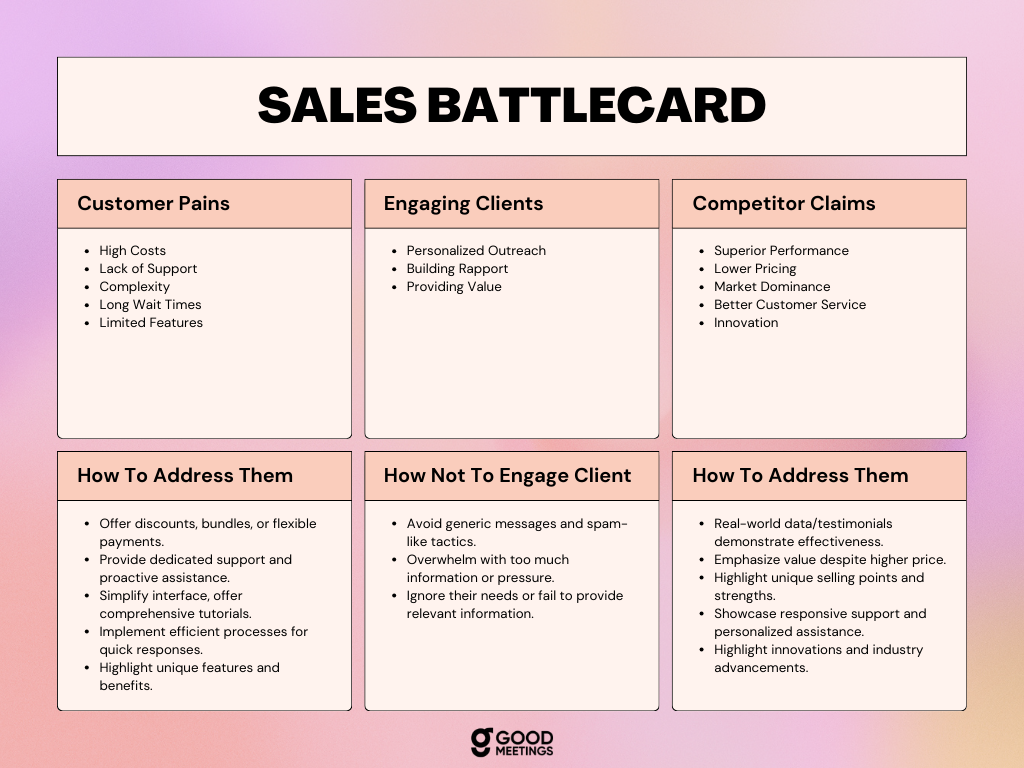
Image Source: Goodmeetings
Sales Battlecard Template 2
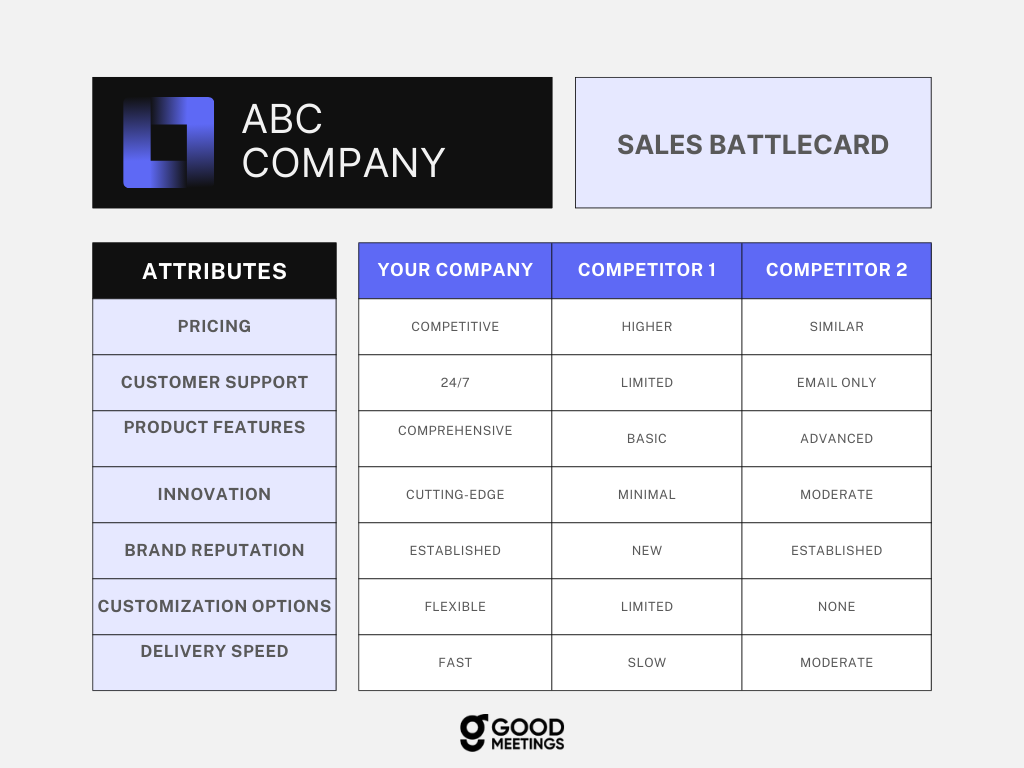
Image Source: Goodmeetings
Related: 15 Sales Training Ideas That Work!
Sales Battlecard Template 3
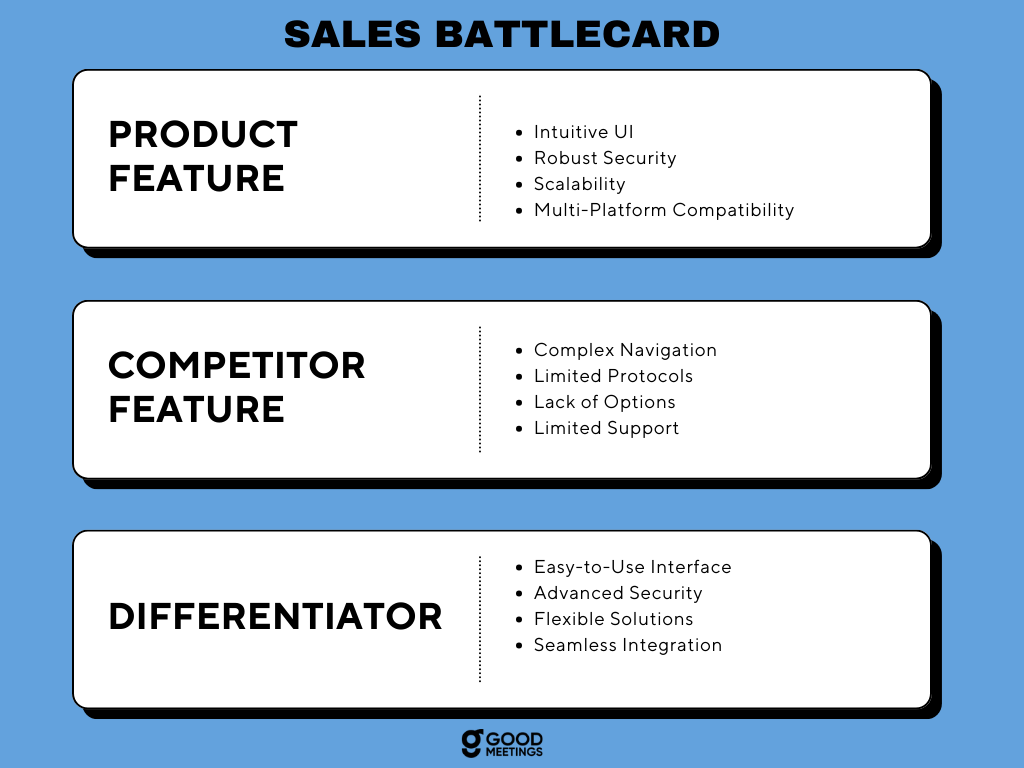
Image Source: Goodmeetings
Sales Battlecard Template 4
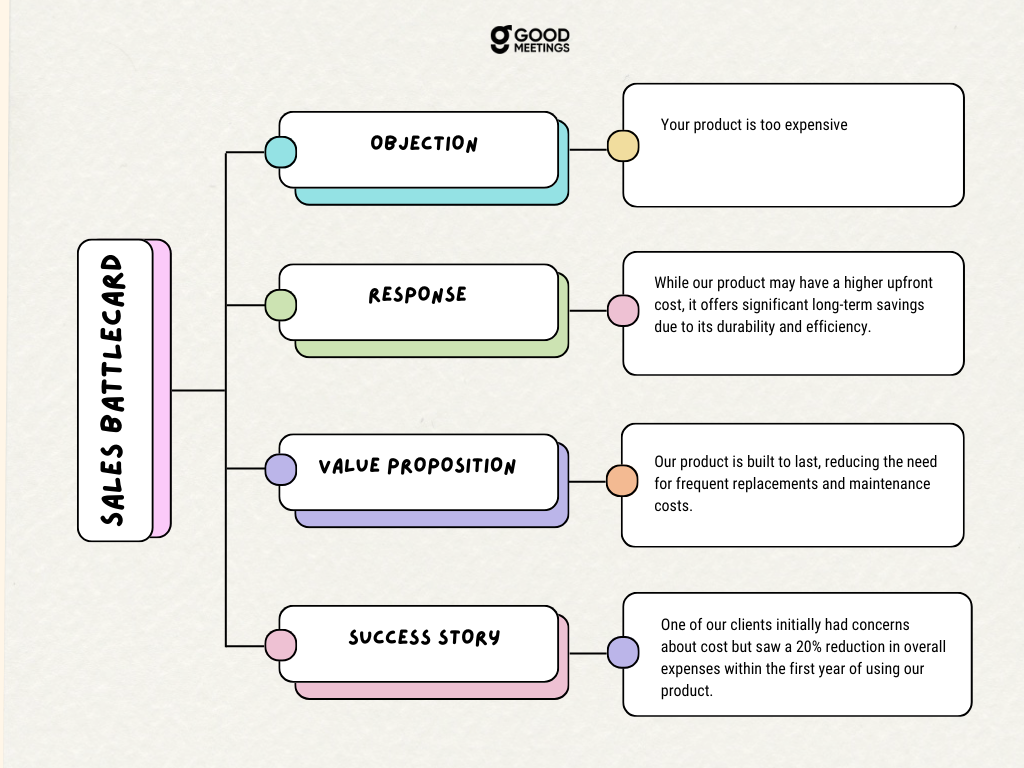
Image Source: Goodmeetings
Related: ChatGPT for Sales: 10 Ways to Boost Your Sales Revenue Using ChatGPT
How to Create an Effective Sales Battlecard?
Creating a sales battlecard involves several steps:
1. Define Objectives and Audience
Determine the objectives of your battle card, such as addressing common customer objections or highlighting product benefits. Understand your target audience’s needs, preferences, and pain points to tailor the content effectively.
Goodmeetings can help you understand your audience by recording, transcribing and analyzing important sales conversations.
2. Collect Information and Resources
Collect relevant information about your products or services, including features, benefits, pricing, and competitive advantages. Research competitors to understand their offerings and how they compare to yours.
3. Select Format and Template
The design and structure of a sales battlecard affect how useful it is for sales teams. Make sure it’s easy to quickly read and grabs attention. Think about what information is important and how your audience likes to see it. Look at different free sales battlecard templates online and pick the one that works best.
4. Create Content
Create concise and impactful content for your battle card, focusing on key selling points, customer pain points, objection-handling strategies, and competitive differentiation. Use clear language and visuals to make the information easily understandable and memorable.
5. Seek Feedback and Refinement
Share your battle card with stakeholders, such as sales team members, managers, and customers, to gather feedback and insights. Use this feedback to refine and improve the content, ensuring that the final version effectively meets the needs of your target audience.
Related: 4 Ways To Measure and Improve Sales Effectiveness
AI-Powered Battle Cards
AI-powered battle cards are advanced sales tools that use artificial intelligence to analyze customer data, competitor strategies, and market trends in real time. They provide personalized insights and recommendations to sales teams, helping them tailor their pitches effectively.
Here’s a comparison between regular battle cards and AI-powered battle cards:
| Feature | Regular Battle Cards | AI-Powered Battle Cards |
| Data Analysis | Relies on static information | Uses AI algorithms for real-time data analysis |
| Personalization | Limited customization based on predetermined criteria | Offers personalized insights tailored to individual prospects |
| Responsiveness | Static and may become outdated quickly | Adapts in real-time to changing customer needs and market trends |
| Decision Support | Provides general guidance | Offers data-driven recommendations for strategic decision-making |
| Efficiency | Requires manual updating and maintenance | Automates data analysis and updates, saving time and effort |
| Competitive Edge | Provides basic information about products and competitors | Offers competitive advantage through real-time insights |
| Effectiveness | Relies on the sales team’s interpretation | Enhances sales effectiveness with targeted recommendations |
With Goodmeetings, you will get auto-generated sales battelcards on demand. You can use them during live calls to easily handle objections and deliver an impactful sales pitch.
Related: 6 Proven Ways To Close More Deals
How Do You Drive the Adoption of Battle Cards?
Driving the adoption of battle cards within a sales team involves several key steps:
1. Training and Education
Conduct comprehensive training sessions to educate sales teams about the purpose, benefits, and usage of battle cards.
2. Integration into the Sales Process
Integrate battle cards into the existing sales process for easy accessibility and routine utilization by sales reps.
3. Feedback Loop
Establish a feedback mechanism for sales reps to provide input on the effectiveness of battle cards and suggest improvements.
4. Recognition and Incentives
Recognize and reward sales reps who consistently use battle cards effectively to achieve positive results.
5. Continuous Improvement
Regularly review and update battle card content to align with evolving sales strategies and objectives.
Related: Sales Productivity Formula – How to Calculate with Examples
The Secret Battle Card You Cannot Miss!
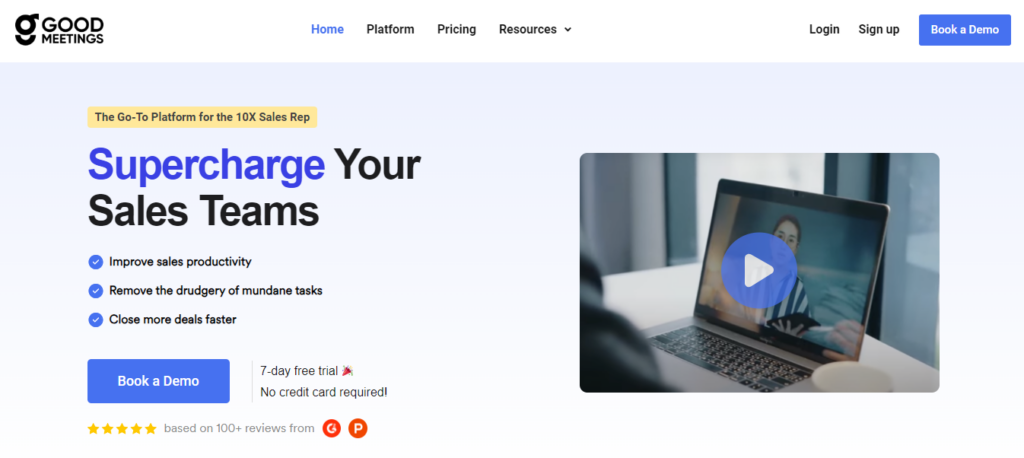
Source: Goodmeetings
Battle cards are essential tools for sales teams, aiding in effective customer conversations and empowering them with vital information for closing deals.
However, these cards will only be effective when they contain accurate, current, and relevant data.
And that’s where AI can help you.
AI-powered solutions like Goodmeetings automates data extraction from strategy meetings and sales calls, generating battle cards seamlessly.
These AI-powered battle cards empower sales reps with real-time insights on competition, pricing, and objections, enhancing their pitches and closing rates.
With Goodmeetings, you gain an edge over competitors, providing instant assistance for common client inquiries and objections.
And that’s not all; you can do a lot more with Goodmeetings:
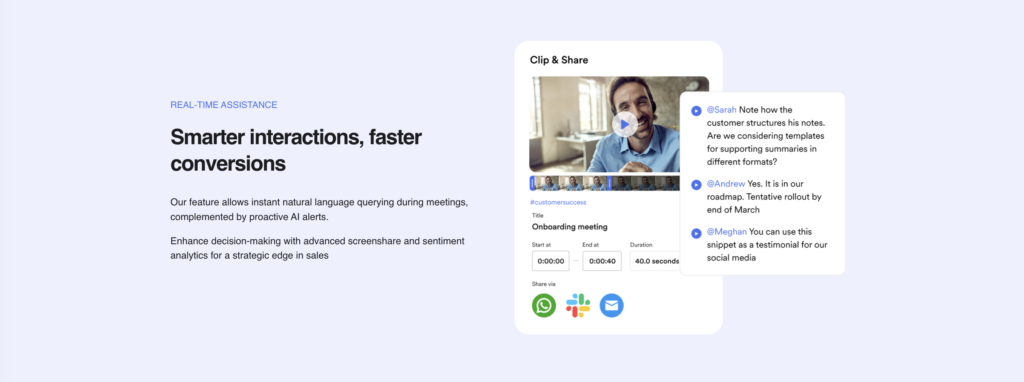
Source: Goodmeetings
- Auto Record Meetings: Never miss important discussions with easy-to-set-up meeting recording that captures every detail, including conversations, slides, and key moments.
- AI-Powered Insights: Use AI to capture meeting intel and provide high-quality transcriptions and summaries in multiple languages.
- Real-Time Assistance: Benefit from instant natural language querying during meetings and proactive AI alerts.
- Live, Incognito Human Coaching: Receive real-time guidance from leaders via private chat during challenging customer interactions.
- Customer Profile: Gain a complete understanding of each customer, including their name, role, and previous interactions.
- Questionnaires: Automatically capture responses to custom discovery questions, generating scores and qualifying leads based on responses.
- Integrations: Plug meetings into various workflows and favorite tools, including schedulers, video conferencing platforms, and CRM systems.
The best thing is that you can use Goodmeetings for free with the 7-day free trial option. Beat your competitors at their own game by using Goodmeetings as your secret weapon.
Related: Getting Started with the Goodmeetings Notetaker
Wrapping Up
Whether you’re a small business grappling with training new agents or a large corporation managing a high volume of calls, sales battlecards can help you win every battle.
And now, you can easily take down your competitors with the help of AI-powered battle cards offered by Goodmeetings. Get real-time insights and empower your sales team to close deals like a pro.
GET IN TOUCH

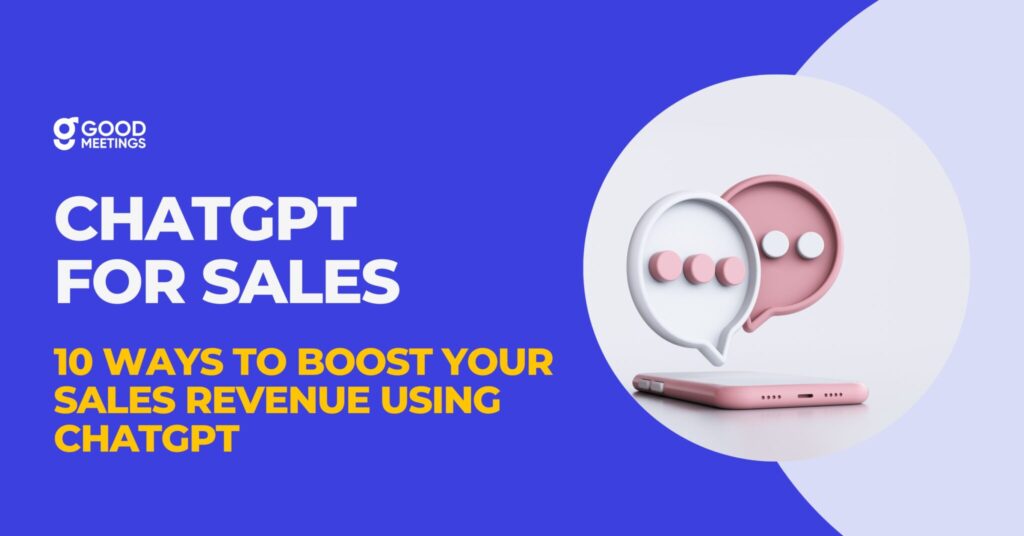



![15 Best AI Sales Tools & Software [2024]](https://goodmeetings.ai/wp-content/uploads/2024/04/THE-ULTIMATE-GUIDE-TO-WINNING-CLOSING-MORE-DEALS-2-1024x536.png)